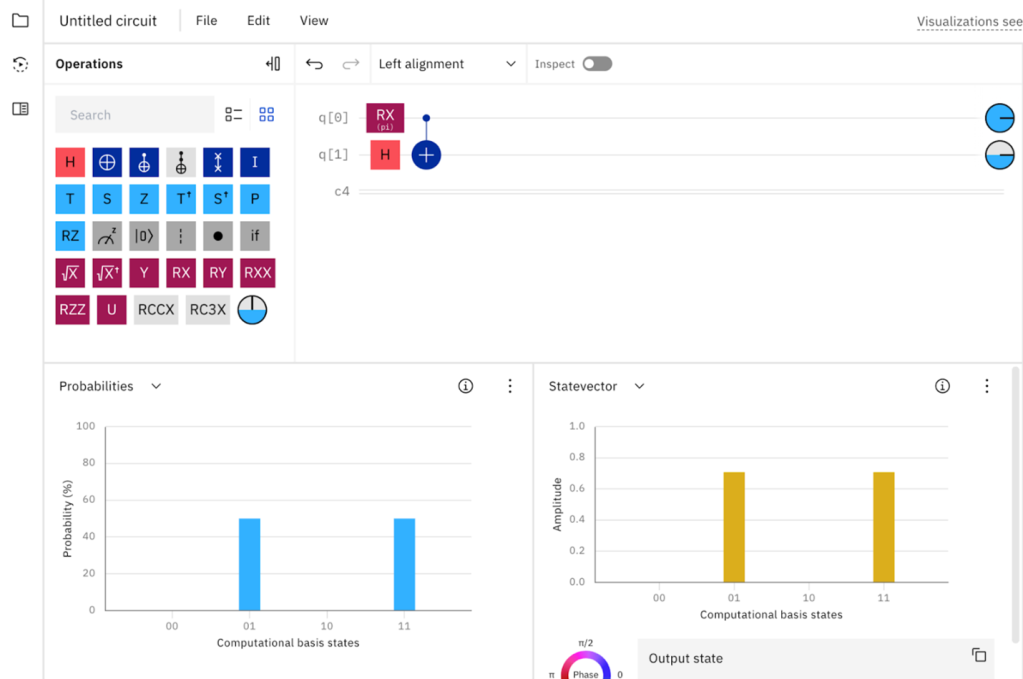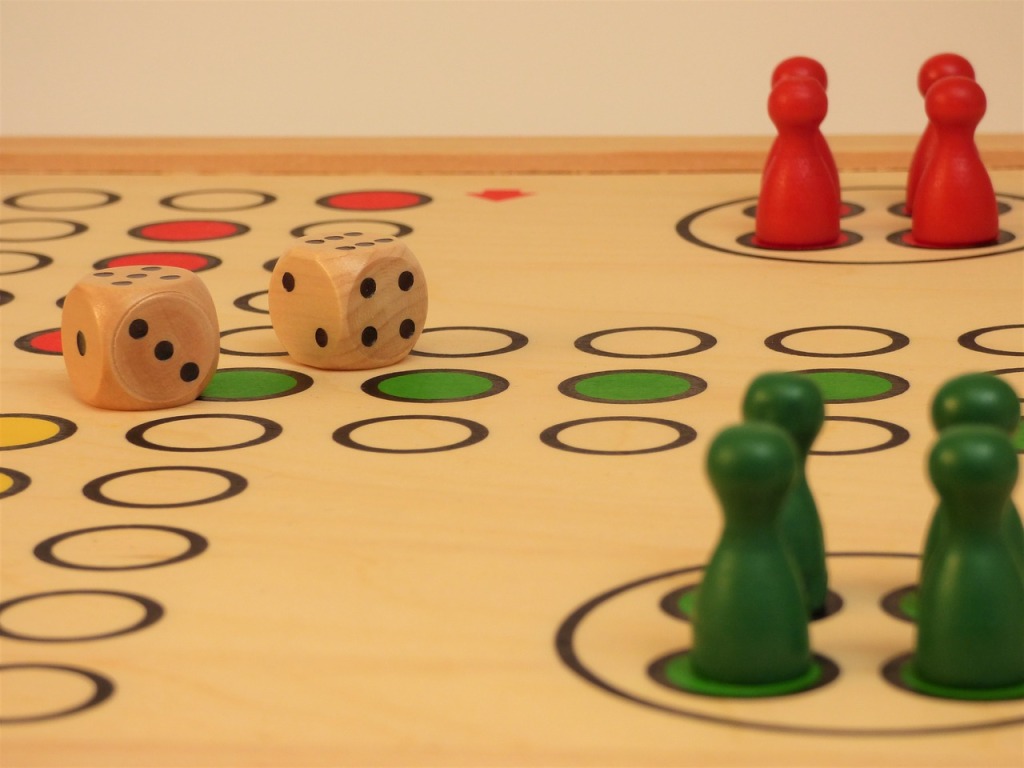By Kevin Zhang and Marisa Dusseault
Kevin Zhang is a high school student from Flintridge Preparatory School in California who spent the summer as a Student Researcher working with Dr. David Orrell. Kevin’s project with Dr. David Orrell aims to illustrate that quantum science can be used to explain decisions that people make in everyday life.
If you are unfamiliar with quantum economics, this may seem like an absurd suggestion, but consider the 2008 financial crisis which affected the global economy in a way that persists in modern culture. How did this happen? Aren’t there brilliant people employed on Wall Street and in investment banking who should have seen this coming? Kevin suggests that the root of this problem may be the classical models that are currently used in these settings:
Classical economics is built on the theory of ‘rational economic man.’…The 2008 financial crisis—and every other economic crisis within the past few decades show the obvious flaws with classical economics. The simple truth is that people do not act rationally, because if they did, there would be no recessions or depressions.
Classical economics is unable to effectively model human decision making and because of that, classical models often fall short and cannot foresee crises. But on a much more digestible scale, quantum models even excel when studying simple games. One example that Kevin illustrated was the Prisoner’s Dilemma. Kevin outlines the game as follows: “Consider two friends, Alice and Bob, who are arrested for committing a crime. However, the police do not have enough evidence to send both to prison. In response, they offer Alice and Bob both the option to defect on the other person. If both defect, then everyone gets four years in prison. If Alice defects and Bob cooperates, then Alice gets 0 years in prison and Bob gets 5, and vice versa. However, if both Alice and Bob cooperate, then both players only get two years in prison.” The assumption of the classical model is that people make decisions only for their own gain. In that case, one would expect the prisoner’s to always defect. However, that is not what happens when this experiment is conducted on real participants. When asked, people only defect 64% of the time. Armed with this background knowledge, Kevin used this game as a case study for implementing a quantum model:
Over the summer, I worked with Dr. David Orrell to pursue research into human decision making in different games, like the Hawaii Vacation, the Ellsberg Paradox, and the Prisoner’s Dilemma. Although all three games provide ample evidence that a quantum model for cognition may be the way to go, the Prisoner’s Dilemma stood out the most. While doing research, I found multiple quantum variations on the game through the use of matrices, but I wanted to try something new. It was around this time that Dr. Orrell had told me about IBM’s free-to-use Quantum Composer. IBM Quantum Composer is a quantum computer with qubits and gates as shown below.

Figure 1: Quantum Model created using IBM Quantum Composer
After playing around with it for a few days, I tried modeling human cognition through the Prisoner’s Dilemma with my new tool. The two qubits shown in the above picture each represent the quantum strategy for either Bob or Alice. q[0] represents Alice’s choice and q[1] represents Bob’s choice. Building on previous research from the matrix model, each player had the option to cooperate, defect, or go with the quantum Hadamard gate. The choice for cooperation or defect could simply be represented by rotating a qubit with an RX gate by a certain amount. The Hadamard gate on the other hand, could also be represented with the gate with an “H” in the middle for Hadamard. When the results were calculated for the expected payoffs for Alice and Bob, the results were similar to previous research done with matrices.
Incorporating the Hadamard gate option allows for the players to choose to entangle their decisions together. Their final decisions are still defect, or not defect, but now their decision depends on the other player. Consider if you were asked to play this game, what types of questions would you be asking yourself before you made your final decision? Am I friends with the other prisoner? What kinds of life events would the other person miss out in if they were in prison for 4 or 5 years? Would they be mad at me if I defected? Asking these kinds of questions is nearly automatic for people, but modeling this entanglement is unique to the quantum approach:
As I later shared my work with Dr. Orrell, we discussed the huge potential for what the IBM Quantum Composer had. Prior research relied on demonstrating human cognition through matrix multiplications on computers. However, quantum computers like IBM Quantum Composer, gives researchers easy access to alternative models that could represent human cognition. Just like how the two qubits q[0] and q[1] represent Alice and Bob, the two qubits could also be a good representation of the duality of our brains. The top qubit q[0] could represent the left hemisphere of our brains, and the bottom qubit q[1] could represent the right. Using qubits to model cognition provides the opportunity to see the effect of interference and superposition: two aspects of thinking that have been heavily researched in the past few decades. All it takes on IBM Quantum Composer is to drag a C-NOT gate or a simple RX rotational gate and within seconds, the computer computes results via probability distributions.
Another way to think of this kind of entanglement is as cognitive interference. That is, irrational thinking interfering with rational thinking, thus affecting decision-making. This was studied in 2010 by Vyacheslav Yukalov, and Didier Sornette:
Through experimental and quantum mathematical basis, they discovered that the magnitude of cognitive interference affected decision making by 25%. In other words, there would consistently be a 25% deviation from fully “rational” choices. Already, this quarter law, as they called it, poses huge problems to financial systems because it shows just how prevalent irrationality is. Taking into account the 2008 financial crisis, the quarter law provides a good model of how the 25% overspeculation of housing led to the creation of the bubble, and the resulting 25% swing back represents the actual bubble burst and its aftermath (Orrell, 2022).
The housing crisis example is a good illustration of what happens when we trust models too much. But in a broader sense, this “quarter law” can be used to explain many decisions that people make, or don’t make:
…[For] a person to fully flip their decision from A to B, where A and B represent opposite decisions, there must be a perceived minimum of a 3 to 1 ratio of B over A (Orrell, 2022). This tendency to stick with original decisions despite mounting evidence against it is a huge factor that leads to widespread poor decision making.
Kevin points out that many economists consider the occurrence of financial crashes on the decadal scale to be a product of a natural boom-bust cycle. However, the inability of classical models to understand the nuances of human decision-making means that these cycles are likely made more dramatic than necessary. Kevin describes the quantum approach as being more holistic:
As I continued to delve into the world of quantum economics and quantum cognition, I realized that it will soon be a very “hot” topic, as ideas from quantum finance, psychology, and economics all join together to produce a seemingly more cohesive model for how our financial world truly works.
In his proposal completed during his completion of the Reading and Writing program with Advanced Learning Research, Kevin outlines how he plans to test the models for the Prisoner’s Dilemma and other similar games on real data gathered from other students at his high school. He says he would not be surprised to see irrational decision making playing a role in his findings. His project also has the added variable of age and he plans to survey both students and parents on their decisions in the games. Kevin’s research seeks to show that even when people are presented with seemingly simple decisions, rational thought is interfered with. Kevin leaves us with some final thoughts on human nature and the future of the rational economic man:
To that end, it is time to embrace irrationality as a core tenant of human decision making, instead of blindly accepting the proposition of the “rational economic man.”… As the famous Friedrich Nietzsche once said, “The irrationality of a thing is no argument against its existence, rather a condition of it.”
You can read Kevin’s complete thoughts on the topic here.
References and Further Reading
American Psychological Association (APA). (2022). Guidelines for ethical conduct of behavioral projects involving human participants by high school students. https://www.apa.org/about/policy/guidelines-ethical-conduct-high-school-students.pdf
Hines, T. (2018, April). Mayfield brain & spine. Brain anatomy, Anatomy of the human brain | Mayfield Brain & Spine Cincinnati, Ohio. https://mayfieldclinic.com/pe-anatbrain.htm#:~:text=Not%20all%20functions%20of%20the,in%20about%2092%25%20of%20people.
Orrell, D. (2022). Quantum Economics and Finance: An Applied Mathematics Introduction. Third edition. New York: Panda Ohana.
Seymour, T. (2017, June 24). Corpus callosum: Function and disorders. Medical News Today. https://www.medicalnewstoday.com/articles/318065#Disorders-of-the-corpus-callosum
Yukalov, V. I., & Sornette, D. (2010). Entanglement production in quantum decision making. Physics of Atomic Nuclei, 73, 559-562.

Leave a comment